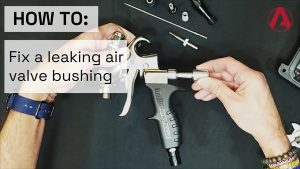Double flapper check valves are known to the public.
They include annular shells with two frames mounted on radial hinge pins and approximately semicircular or D-shaped valves or discs. These discs keep the valve in a closed position where the disc closes the corresponding semi-circular or D-shaped orifices defined in the housing by means of a radial cross-section. The plate is usually pushed to a closed position by a spring. The valve plate can be pushed to the opening position by the given pressure value on the upstream side of the valve. At the opening position, the valve plate is approximately parallel to the axis of the shell. The disc can be provided with a flange-shaped buffer extending from the semi-circular edge of the disc side, which does not contact the seat around the semi-circular opening. Usually there is also a stop pin parallel to the hinge pin. The stop pin also prevents the valve from turning more than 90 degrees from the closed position.
The double flapper check valve is a non-return valve, which opens according to the given pressure value on the upstream side, that is to say, according to the pressure applied to the valve plate through the semicircular opening. When the pressure decreases, the flow velocity decreases, and the valve plate is pushed to the closed position of the valve by reverse pressure, in some cases by means of spring device. This double flapper check valve has many advantages over a rotary check valve with a single or tangentially articulated disc. Double flapper check valves have been specially used in the advantages of lighter weight, compact and fast closure response. Double flapper check valves are made of plastic or metal sheets in low pressure applications, whereas in high pressure applications, i.e. 300 ANSI pressure level (PN50) or higher, metal sheets are usually cast or forged.
The application limitation of known double flapper check valves relying on metal-to-metal seals is their reverse flow leakage performance compared with other check valves.
This limitation has been recognized in international and national standards. For example, API598 can make metal seat double-plate check valves have greater leakage than other types of valves, such as rotary check valves with metal seat can have zero leakage. In some applications, the problem of backflow leakage can be solved by installing elastomeric seals on the seat. But for other applications, such as low or high temperature applications, this solution is not applicable.
Double flapper check valves have been used for more than 30 years, and the harmful back flow leakage properties of such check valves have been known. It is characterized by two D-shaped seats on the valve body and two separate D-shaped plates rotating around the hinge pin.












